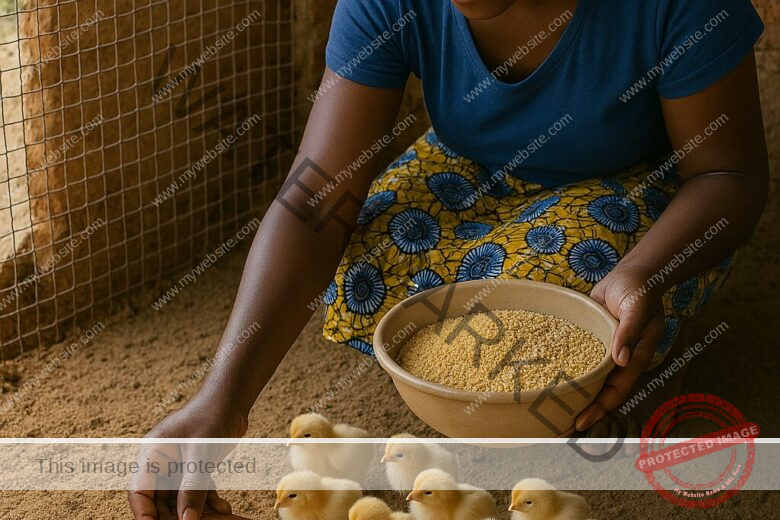If you’ve ever considered venturing into the world of fish farming, Kentucky offers a promising landscape to start your own business.
Whether your goal is to produce fish for meat consumption or cater to the pet market, fish farming is a growing industry in the United States, and Kentucky is no exception.
To establish a fish farming business in Kentucky, you have to start by planning, choose fish farm type, secure adequate space, construct fish housing, arrange for equipment, procure quality fish breed, to marketing and sales.
In this guide, we will explore the essential steps and considerations to help you embark on your journey to start a fish farming business in Kentucky.
How to start a Fish Farming Business in Kentucky
Fish farming is a profitable business and it is one of the growing markets in Kentucky. You can opt to start your fish farming business in this state to be among the few making the profits.
The steps involved in starting a fish farming business in Kentucky has been discussed below. Ensure you read through to the end.
Read Also: How To Start a Fish Farming Business in Kansas
Step 2. Start by Planning
To successfully launch your fish farming business in Kentucky, it’s crucial to develop a business plan tailored to your specific goals.
Begin by outlining your objectives, financial projections, marketing strategy, and operational details.
Determine the type of fish species you plan to farm, the scale of your operation, target markets, pricing strategies, and distribution channels.
Conduct market research to understand the demand for specific fish species in Kentucky and beyond.
Analyze competitors to identify their strengths and weaknesses, allowing you to refine your business strategy and differentiate yourself in the market.
In your financial projections, carefully estimate the costs involved in setting up and operating your fish farm.
Read Also: How to Start a Fish Farming Business in Iowa
Consider expenses such as land acquisition or leasing, equipment, fish stock, feed, labor, marketing, and administrative overheads. Project your revenue based on anticipated sales volumes and market prices.
Develop a robust marketing strategy to attract customers and create awareness about your fish farming business.
Explore various channels, including local markets, restaurants, grocery stores, and online platforms, to reach potential buyers.
Highlight your unique selling points, such as sustainable farming practices, superior product quality, or competitive pricing, to stand out in the market.
Also, include operational details into your plan, addressing crucial aspects of day-to-day farm management.
Read Also: How to Start a Fish Farming Business in Indiana
Determine optimal fish stocking density, feeding schedules, water quality monitoring, disease prevention measures, and harvesting techniques.
Seek guidance from experienced fish farmers or aquaculture experts to ensure you implement best practices.
For assistance in creating your business plan, you can click on this link to access a fish farming business plan template, which will serve as a helpful starting point.
Step 3. Choose The Type Of Fish Farm
It’s important to select the appropriate type of fish farm that aligns with your goals and resources. Your choice will influence your business model, infrastructure needs, and operational strategies.
Take the time to thoroughly research each option, consult with industry experts, and assess the market dynamics in Kentucky to make an informed decision.
You can choose to establish fish hatchery where fingerlings are produced and sold to other fish farmers, or you can choose to farm fish for meat production which involves raising fingerlings to adult and sell to customers.
Read Also: How to a Start Fish Farming Business in Illinois
Each has its own considerations and requirements. Evaluate factors such as market demand, profitability, infrastructure costs, and your own expertise to determine which option is the best fit for your fish farming business in Kentucky.
Step 4. Secure Adequate Space
You need to acquire a space where you will carryout your fish farming operation. It can be on land or near the sea. You can choose to purchase or lease the land as long as it suits your preference.
Also, you may not necessarily require to purchase a land if you have enough space in your backyard. It means you will practice the close system farming of using ponds or tanks.
Determine the land size needed based on the scale of your fish farm and the chosen type of fish production. Consider factors such as the number of fish tanks or ponds, hatchery facilities, and other infrastructure requirements.
Ensure the land provides ample space for the smooth functioning of your fish farm operations. Consider accessibility for transportation and easy movement of equipment, supplies, and harvested fish.
Read Also: How to start a Fish Farming Business in Connecticut
Look for land with natural or engineered drainage systems. Proper drainage is essential for efficient water management, waste disposal, and disease prevention on your fish farm.
Evaluate the available water sources on the land. Assess the quantity, quality, and reliability of the water supply. A reliable and adequate water source is vital for the health and growth of your fish.
Step 5. Construct Fish Housing
There are different types of fish housing available. You can choose to purchase already made or construct a tailor-made house that suits your preference.
If you intend to farm fish in natural water bodies like the ocean or lakes, net pens or cages anchored to the sea floor can be a viable option.
These structures confine the fish within a designated area while utilizing natural water resources.
Properly designed net pens or cages provide water flow, predator protection, and facilitate monitoring and feeding.
Alternatively, you can opt for closed systems such as tanks or ponds, which can be operated on land or floating on water.
Closed systems offer more control over environmental conditions and efficient water management.
Equip tanks or ponds with filtration systems, aeration mechanisms, and temperature control to optimize fish health and growth.
They are versatile and suitable for various fish species, providing flexibility in terms of location and scalability.
Read Also: How To Start a Fish Farming Business in Delaware
Step 6. Arrange For Equipment and Supplies
Now that you’re progressing with your fish farming business in Kentucky, it’s time to ensure you have all the necessary equipment and supplies in place for smooth operations.
Some of the basic equipment and supplies you need include the following:
Feeding and Watering Systems
Select feeding systems appropriate for your fish species and farm type. Automatic feeders, feed storage containers, and feeding platforms are essential. Additionally, ensure you have suitable watering systems to provide a consistent and clean water supply for your fish.
Tanks or Ponds
If you’re operating a closed system fish farm, invest in the right tanks or ponds based on your operation’s scale. Consider factors like durability, ease of maintenance, and efficient water circulation.
Netting and Fencing
For open-water fish farms, invest in high-quality netting and fencing materials to prevent fish escape and protect them from predators. These barriers should withstand environmental conditions and resist wear and tear.
Monitoring and Control Systems
Implement systems to monitor and control essential parameters such as water quality, temperature, oxygen levels, and feeding schedules. Sensors, data loggers, and automated control systems can optimize fish health and growth.
Harvesting and Processing Equipment
Plan for equipment required for harvesting and processing fish, such as nets, harvesting tools, grading equipment, and storage facilities. If on-site processing is a part of your business plan, consider investing in filleting machines, vacuum sealers, and refrigeration units.
Safety and Maintenance Tools
Ensure you have safety equipment like life jackets, first aid kits, and fire extinguishers readily available. Additionally, stock up on maintenance tools such as nets, ropes, cleaning supplies, and basic hand tools.
Incubation Equipment
If you plan to hatch fish eggs on-site, invest in incubation tools like egg trays, incubation jars, or incubation baskets to create a controlled environment that supports their development.
Aeration Systems
Maintain adequate oxygen levels in hatchery tanks or ponds using aeration equipment like air stones, diffusers, or aerators. These devices distribute oxygen throughout the water, promoting fish health and growth.
Water Filtration Systems
Implement water filtration systems to maintain water quality and remove debris, excess feed, and waste products.
Mechanical filters, biological filters, and UV sterilizers are common components to prevent the buildup of harmful bacteria and ensure a healthy environment for your fish.
Step 7. Procure Quality fish Breeds
Arrange for a reliable fish breed that meets your chosen species and production goals from reputable hatcheries or suppliers.
When selecting your desired fish breed, make sure you consider factors like breed suitability, disease resistance, productivity, and market preferences.
Some of the common fish breeds raised in Nebraska include tilapia, catfish, trout, and several others.
Step 8. Implement Biosecurity Measures
As you embark on your fish farming journey in Kentucky, it is vital to prioritize biosecurity to protect the health and productivity of your fish.
By implementing strict biosecurity protocols, you can effectively prevent the introduction and spread of diseases on your farm.
You need to take measures to control access to your fish farm and minimize the risk of disease introduction. Install gates, fencing, and signage to clearly mark restricted areas.
Limit entry to authorized personnel, visitors, and vehicles, ensuring that only essential individuals have access to your farm.
Also, try to maintain proper hygiene throughout your fish farm to mitigate disease risks. Promote regular hand washing and sanitization for all farm workers and visitors.
Provide appropriate protective clothing and footwear to prevent the transfer of pathogens between different areas of your farm.
Importantly, establish effective protocols for disinfection and sanitization to prevent the spread of diseases.
Use approved disinfectants and follow recommended application methods. Regularly disinfect equipment, vehicles, and tools, especially when moving between different ponds or tanks.
Implement a quarantine period for new fish stock before introducing them to the main population. Monitor their health closely during this time to identify any potential diseases.
Regularly conduct health checks and testing in collaboration with veterinarians or fish health professionals to ensure the early detection and management of any health issues.
Consult with veterinarians or fish health experts to develop appropriate vaccination programs for your fish species. Vaccinations can significantly reduce the risk of specific diseases and contribute to the overall health and welfare of your fish.
Step 9. Feed and Nutrition
Feeding your fishes with nutritious feed is essential for the health and growth of your fish. To ensure their well-being, it is crucial to develop a comprehensive nutrition plan and maintain a consistent supply of high-quality feed.
Consider important factors such as protein content, lipid levels, vitamins, minerals, and other essential nutrients when formulating your fish’s diet.
These elements play a vital role in supporting their growth, immune system, and overall vitality. To ensure that your fish receive the necessary nutrition, seek guidance from animal nutritionists who specialize in fish diets.
They can help you design appropriate diets that meet the specific requirements of your fish species.
Regularly monitoring the feeding process and adjusting the feed quantities as needed is also important. This will help you optimize the feed-to-growth ratio, minimize wastage, and ensure that your fish are receiving the appropriate nutrients.
Step 10. Monitor Health of your Fishes
It is important that you take the health and well-being of your fishes paramount. Make sure you do a regular monitoring is crucial to detect any potential health issues early on and take timely action.
Implementing proper monitoring protocols will help you maintain the overall health of your fish population.
Conduct regular health checks of your fish to assess their condition. Monitor their behavior, appetite, and physical appearance.
Look for any signs of abnormalities, such as changes in swimming patterns, skin lesions, or unusual behavior.
If you notice any concerning signs, investigate the issue promptly and take appropriate measures to address it.
It is important to implement disease prevention measures as advised by your veterinarian.
This may involve regular disinfection of equipment, establishing quarantine protocols for new fish, and adhering to biosecurity practices.
Also, try to monitor water quality so as to maintain optimal conditions for fish health. Regularly measure factors such as temperature, dissolved oxygen levels, and pH to ensure that the water quality meets the requirements of your fish species.
Step 11. Marketing and Sales
Now, it’s time to focus on marketing and selling your fish products to maximize your business’s success. To effectively market your fish products, it is essential to develop a well-thought-out marketing strategy.
Consider your target market and identify potential buyers, such as wholesalers, retailers, restaurants, or even direct consumers.
Explore various marketing channels to reach your potential buyers. Local markets, grocery stores, seafood restaurants, online platforms, and even farmer’s markets can be valuable avenues to showcase and sell your fish products.
Promote the unique selling points of your fish farm, such as sustainable farming practices, superior product quality, or competitive pricing, to differentiate yourself from competitors.
Consider approaching local restaurants, supermarkets, or seafood distributors to explore collaboration opportunities.
Market Demand, Export, and Trend Analysis
The market demand for fresh, locally sourced fish has risen dramatically, driven by health-conscious consumers and a preference for sustainable food options.
Fish farming presents a unique opportunity to cater to this demand while contributing to local economies.
Export opportunities also abound, as premium-quality fish finds its way to international markets.
Top Suppliers of Fingerlings in Kentucky
Kentucky boasts reputable suppliers of fingerlings and juvenile fish. These suppliers offer a variety of species and ensure the health and quality of the fish they provide, making them valuable partners for fish farming ventures.
Some of the top suppliers of fingerlings in Kentucky include:
- Whiskers Catfish Farm
- Crystal Bridge Fish Farm
- White Oak Creek Fish Farm
- Jones Fish
Essential Tools and Inputs for Fish Farming
Fish farming necessitates essential tools such as ponds or tanks, water quality monitoring equipment, aeration systems, feeding tools, nets, and harvesting equipment.
Quality fish feed, fingerlings, and appropriate water management inputs are essential for success.
Benefits of Starting Fish Farming Business in Kentucky
Starting a fish farming business in Kentucky offers numerous benefits:
- Diverse Market Demand: Kentucky provides access to a diverse market demand for fish products, including restaurants, seafood retailers, local markets, and direct consumers, allowing you to tap into various sales channels.
- Supportive Government Initiatives: The state of Kentucky offers various programs, incentives, and resources to support aquaculture development, including technical assistance, grants, and loans.
- Sustainable Farming Practices: Fish farming in Kentucky can be conducted using sustainable and environmentally friendly practices, reducing the ecological impact while meeting the increasing demand for sustainable seafood.
- Economic Contribution: Fish farming businesses in Kentucky can contribute to the local economy by generating employment opportunities, supporting local suppliers, and promoting tourism through agri-tourism activities.
Is Fish Farming Business Profitable
Yes, fish farming can be a profitable business venture. The profitability of a fish farming business in Kentucky depends on various factors, such as the scale of the operation, market demand, operational efficiency, and cost management.
A well-managed fish farm with appropriate planning and market analysis has the potential to generate substantial profits.
Profitability can be enhanced by selecting high-demand fish species, implementing efficient production techniques, controlling operating costs, and establishing strong marketing channels to maximize sales.
Challenges Faced when Starting Fish Farming Business in Kentucky
Starting a fish farming business in Kentucky may present several challenges, including:
- Capital Investment: Establishing a fish farm requires significant upfront investment for land acquisition, infrastructure development, equipment purchase, and stocking fish.
- Disease Management: Fish farms are susceptible to diseases, parasites, and infections, which can cause significant losses if not properly managed. Implementing biosecurity measures and working closely with veterinarians are essential to minimize disease risks.
- Market Competition: Kentucky’s fish farming industry is competitive, and entering an established market may require differentiation strategies and effective marketing techniques to stand out.
- Seasonal Variability: Weather conditions and seasonal changes can impact fish growth rates, reproduction, and feed availability, requiring careful management and planning.
Factors to Consider when Starting Fish Farming Business in Kentucky
When starting a fish farming business in Kentucky, consider the following factors:
- Fish Species Selection: Choose fish species that are suitable for the local climate, market demand, and farming conditions in Kentucky.
- Market Analysis: Research and assess the market demand for specific fish species, identify potential buyers, and understand consumer preferences to align your production with market needs.
- Infrastructure and Equipment: Determine the appropriate infrastructure, such as ponds, tanks, or cages, and acquire necessary equipment for fish production, feed management, water quality monitoring, and harvesting.
- Water Supply: Evaluate the availability and quality of water sources for your fish farm, ensuring a sufficient and reliable water supply to support fish health and growth.
- Feasibility and Financial Planning: Conduct a comprehensive feasibility study and financial analysis to assess the viability and profitability of your fish farming venture. Estimate costs, revenue projections, and return on investment to make informed decisions.
- Knowledge and Expertise: Acquire knowledge and seek guidance from experienced fish farmers, aquaculture experts, and industry associations to understand best practices, overcome challenges, and stay updated with the latest advancements in fish farming techniques.
Best Practices for Starting Fish Farming Business in Kentucky
To ensure a successful start to your fish farming business in Kentucky, consider the following best practices:
- Comprehensive Business Plan: Develop a detailed business plan that outlines your goals, strategies, financial projections, and marketing approach.
- Research and Training: Gain knowledge and training in fish farming techniques, aquaculture management, fish health, and business administration through courses, workshops, or mentoring programs.
- Start Small and Scale Up: Begin with a manageable scale and gradually expand as you gain experience and understanding of the market dynamics and operational requirements.
- Collaborate and Network: Build relationships with fellow fish farmers, industry experts, and local institutions to access resources, share knowledge, and explore collaboration opportunities.
- Embrace Technology: Stay updated with technological advancements in fish farming, such as water quality monitoring systems, automated feeding systems, and data analytics tools, to improve efficiency and productivity.
- Continuous Monitoring and Learning: Regularly monitor fish health, water quality parameters, and market trends. Seek continuous learning opportunities to enhance your skills and adapt to changing industry dynamics.
- Marketing and Branding: Develop a strong brand identity, employ effective marketing strategies, and prioritize customer satisfaction to build a loyal customer base and increase sales.
Cost of Starting Fish Farming Business in Kentucky
The cost of starting a fish farming business in Kentucky depends on the scale of farming you intend to establish.
On the average, to start a fish farming business in Kentucky will cost you around $100,000 upward.
Note that the price can be more than the stated amount above considering the cost of resources such as land, equipment, fish breeds, and other essentials.
Spacing Considerations for Stocking Fish
Proper spacing of fish in the farming system prevents overcrowding, which can lead to stress, disease outbreaks, and stunted growth.
Following recommended stocking densities for the chosen species is crucial for optimal results.
Fish Yield per Acre and Considerations
Fish yield varies based on factors like species, stocking density, water quality, and management practices. On average, a well-maintained fish farm in Kentucky can yield a significant quantity of fish per acre, contributing to profitability.
Expected Returns on Fish Farming Investment
The potential returns from fish farming in Kentucky are promising. However, returns depend on factors such as market demand, species selection, growth rates, and efficient management. Well-managed operations can yield significant profits over time.
Risk Assessment in Fish Farming
Like any agricultural venture, fish farming involves risks. These include disease outbreaks, adverse weather conditions, market fluctuations, and operational challenges.
Effective risk management strategies, biosecurity measures, and contingency planning are essential.
Profitability of Fish Farming Venture
The profitability of a fish farming venture depends on various factors. Efficient resource utilization, proper fish care, adherence to best practices, and a responsive market strategy contribute to the venture’s profitability.
Guide to Starting Small-Scale Fish Farming
Starting a small-scale fish farming business is an attractive option for beginners or those with limited space. Here’s a simplified guide:
- Species Selection: Go for species suited to your region and resources.
- System Setup: Choose a suitable container, add water, and provide aeration.
- Fingerlings: Source healthy fingerlings from local suppliers.
- Feeding and Care: Follow recommended feeding schedules and monitor water quality.
- Harvesting: Harvest fish once they reach market size.
Guide to Starting Commercial-Scale Fish Farming
Expanding to commercial-scale fish farming requires careful planning:
- Market Research: Identify high-demand species and market trends.
- Infrastructure Development: Design and construct larger ponds or tanks.
- Fingerling Procurement: Partner with reliable suppliers for consistent stock.
- Optimized Feeding: Implement a feeding strategy to promote rapid growth.
- Harvesting and Marketing: Plan for efficient harvesting and market distribution.
How To Start Fish Farming At Home
Starting a fish farming business at home in Kentucky involves several key steps:
- Research and Planning: Learn about suitable fish species for home farming, required equipment, water quality management, and regulations.
- Select Fish Species: Choose fish species that thrive in Kentucky’s climate and suit your resources. Catfish and bass are popular choices.
- Setting Up Tanks or Ponds: Prepare tanks or small ponds in your backyard. Ensure proper water quality, temperature, and aeration.
- Source Fingerlings: Purchase healthy fingerlings from reputable suppliers to kickstart your farming cycle.
- Feeding and Care: Provide appropriate fish feed, monitor water quality, and maintain a healthy environment for growth.
- Regular Monitoring: Keep a close eye on fish health, water conditions, and growth progress.
- Harvesting: Harvest fish when they reach desired size. Proper methods ensure minimal stress and damage.
How Much Do Fish Farmers Make A Year
Assumed Average: Fish farmers can potentially make between $10,000 to $45,000 per year. However, income varies based on factors like fish species, market demand, scale of operation, and management practices.
Fish Farming Business For Sale
For those interested in purchasing an existing fish farming business in Kentucky, explore local agricultural networks, online marketplaces, and business-for-sale listings. Thorough due diligence ensures you acquire a viable and profitable venture.
Fish Farming Cost and Profit
Assumed Average Cost and Profit: The cost of fish farming can range between $12000 to $16000 per unit of fish produced. Profits also vary based on species, market conditions, operational efficiency, and pricing strategies. On average, a profit of 1 per unit can be anticipated.
Conclusion
Starting a fish farming business in Kentucky presents opportunities for stable demand, revenue growth, and environmental sustainability. By following the steps outlined and discussed in this guide from beginning to the end, you can establish a thriving fish farming venture in Kentucky.



